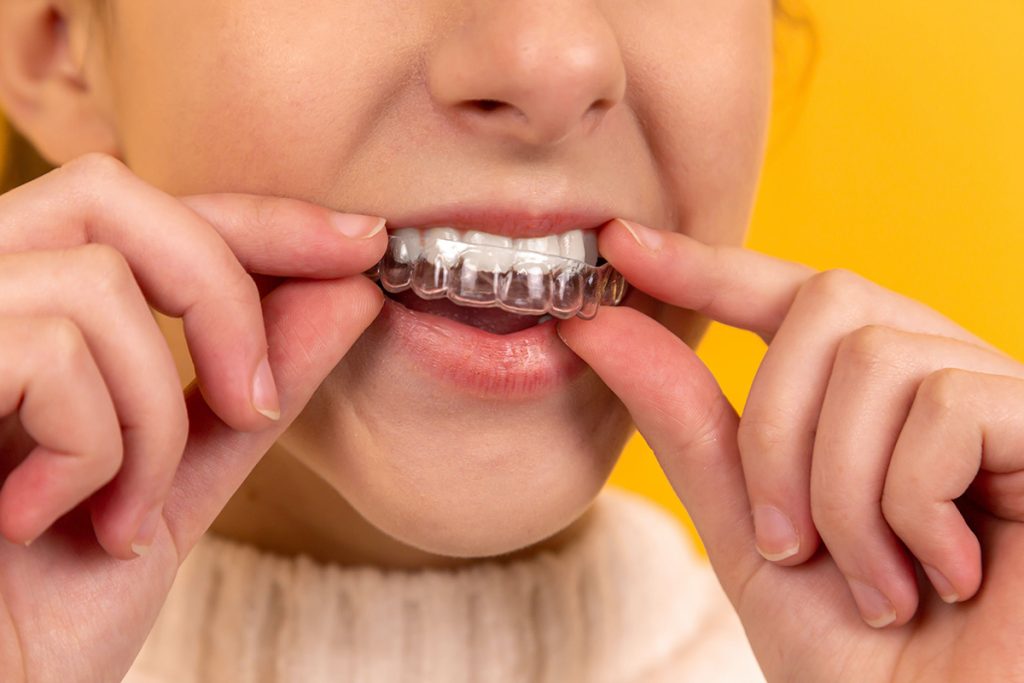If you have dental veneers or crowns, you may be wondering how they will impact your orthodontic treatment. Will the aligners still be able to move your teeth effectively?
The answer is yes! Invisible aligners can still be used to straighten your teeth even if you have veneers or crowns but there are a few things to keep in mind.
First, it’s important to know that the aligners work by putting gentle pressure on your teeth to gradually move them into the desired position. This means that if you have any veneers or crowns, they may not move as much as your natural teeth since they are not as responsive to pressure.
However, this doesn’t mean that your treatment won’t be effective. Your aligners will still be able to shift your teeth into the correct position, it may just take a bit longer.
Orthodontic treatment after reconstruction
Orthodontic treatment is necessary after dental reconstruction. If the teeth are not properly aligned after the reconstruction, they can cause problems with your bite. This can lead to discomfort and headaches. Orthodontic treatment can correct these problems and help you have a healthy, functional smile.
If you have dental veneers or crowns, your orthodontist will need to take this into account when developing your treatment plan. The thickness of the veneers or crowns can impact the amount of space available for movement. This means that your orthodontist may need to use a different type of appliance or make adjustments to your treatment plan.
Despite these challenges, orthodontic treatment after dental reconstruction is often successful. With proper planning and care, you can achieve the straight, healthy smile you deserve.
Avoiding braces?
If you have dental veneers or crowns, then you may not be able to use Invisalign London clear aligners. The aligners are a popular choice for teeth straightening due to the many benefits they offer, but not everyone is a good candidate for treatment. This is because dental veneers and crowns can impact the success of invisible aligner treatment.
Dental veneers are thin, custom-made shells that are bonded to the front of your teeth. They are used to improve the appearance of your teeth and can be made from porcelain or composite material. Crowns, on the other hand, are caps that are placed over your teeth. They are usually used to restore a tooth that is damaged or has been decayed.
Since dental veneers and crowns are bonded to your teeth, they can make it difficult for the clear aligners to attach to your teeth. This can cause the treatment to be less effective. In some cases, it may even cause the treatment to fail altogether.
If you have dental veneers or crowns, there are still some options for you. Your dentist can evaluate your case and let you know if treatment is still a possibility. In some cases, your dentist may be able to adjust your treatment plan so that it can still be effective.
Why use clear aligners?

The benefits of clear aligners include the fact that they are virtually invisible and can be removed for eating and drinking. They are also more comfortable than traditional braces. However, one downside to using clear aligners is that they may not be suitable for treating more severe cases of misalignment.




